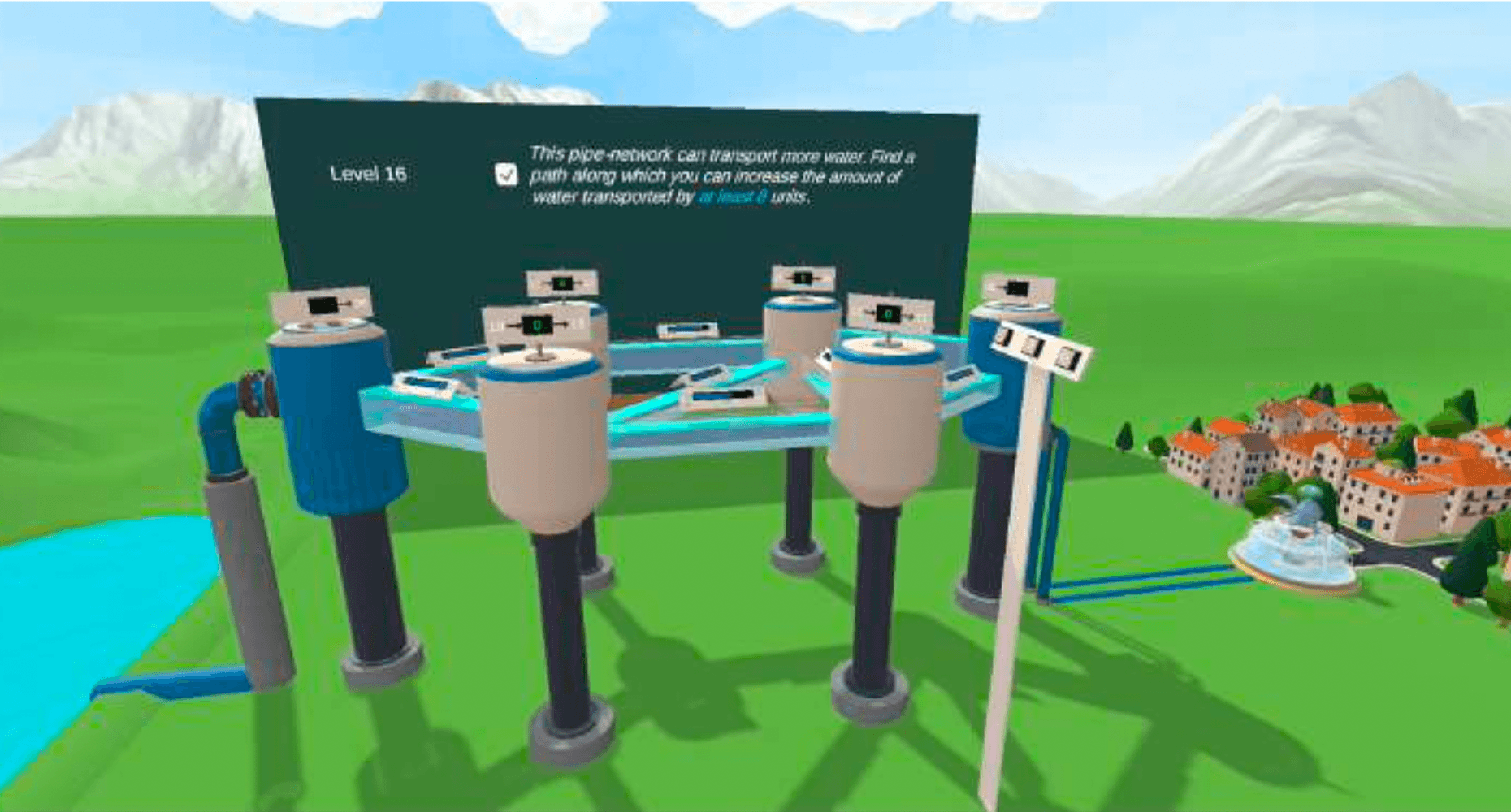Learning Graph Theory with Embodied Interaction in Virtual Reality
Rudolf Varga
Master's thesis, September 2021
Supervisors: Julia Chatain, Prof. Dr. Manu Kapur, Prof. Dr. Bob Sumner

Abstract
Learning mathematics is often presented as a purely mental challenge, where the student has to understand abstract, theoretical concepts sitting in a chair, writing down formulas on a checkered sheet of paper. However, physical engagement with the concept through manipulating objects and playing games could bring more benefits compared to the more traditional learning paradigms. For example, using meaningful gestures during more interactive lessons could help internalizing the mathematical concepts.
With the development of affordable Virtual Reality (VR) systems, new learning activities can be created. In particular, we can now imagine activities where the students engage with mathematical objects by using their bodies in meaningful ways. Such embodied interaction can potentially help students learn by reconnecting the mathematical concepts with the real world and by reducing their cognitive load. However, the use of embodied interaction for learning abstract mathematics in VR has not been explored in great detail yet.
This thesis details the development of a VR and a tablet activity, that uses meaningful body movements to convey various rules and concepts of flow networks. To evaluate our activity, we conducted a quantitative user study, where the difference is the magnitude of the user inter- actions. This difference enabled us to compare the different levels of embodiment. From the data measured we found that the potential benefits of stronger embodiment are mitigated by the increased physical strain of the use of a VR headset. Despite that, both the VR and the tablet version enabled the transfer of knowledge to new problems on the same representation for most participants and to different representations for slightly less participants.